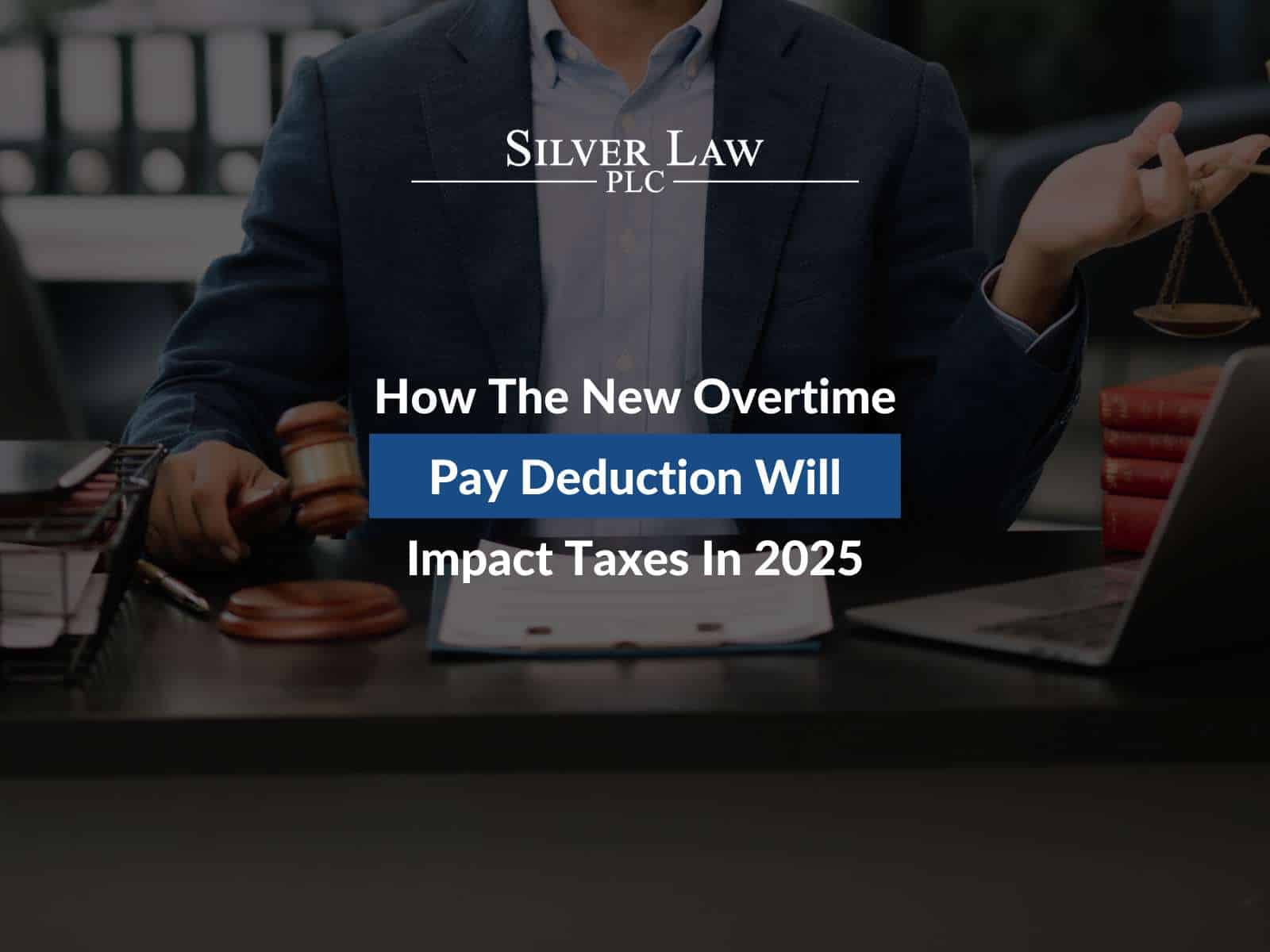How Trump’s New Tax Law Reduces Social Security Taxes For Many Retirees
For millions of retirees in the U.S., Social Security benefits are a financial lifeline, but they also come with an unexpected cost: taxes. Many seniors pay federal income tax on part of their benefits, depending on their income.
Starting in 2025, a new tax law signed by President Donald Trump introduces a special deduction for seniors that may reduce or even eliminate federal income tax on some benefits for many retirees.
While the law doesn’t completely repeal these taxes, it offers meaningful relief for older Americans facing financial strain.
In the article below, our tax lawyers break down how this new rule works and what it could mean for you.

Understanding Social Security Taxes
Social Security benefits were not originally taxed, but since the 1980s, and especially under changes in the 1990s, retirees with higher incomes have had to pay federal income tax on a portion of their benefits. The taxable amount depends on a retiree’s “combined income” (AGI + nontaxable interest + half of Social Security benefits).
Here’s an easier way to see it:
- Single filers with a combined income above $25,000, and married couples above $32,000, may owe tax on up to 50% of their benefits; higher income thresholds (e.g., around $34,000/ $44,000) may trigger up to 85% taxability.
- This taxation is distinct from the payroll tax that funds Social Security—it affects the income tax on benefits, not the Social Security tax withheld from workers’ pay.
What The New Tax Law Changes
The new tax law, often referred to as part of Trump’s broader “One Big Beautiful Bill,” introduces a crucial update for seniors: a new age-based deduction designed to lower the taxable income of retirees, which can reduce how much of their Social Security income is subject to federal taxes.
This deduction starts in tax year 2025, meaning retirees aged 65 or older may qualify for up to $6,000, while married couples where both partners meet the age requirement can claim up to $12,000. The deduction is scheduled to remain in effect through 2028, unless Congress renews it.
By lowering taxable income, the deduction can reduce—or in some cases, eliminate—the portion of Social Security benefits that would otherwise be taxed.
Eligibility for the deduction depends on income:
- Single filers: up to $75,000 in modified adjusted gross income (MAGI)
- Married couples filing jointly: up to $150,000 in MAGI
Seniors whose income exceeds these thresholds will see the deduction gradually phase out, meaning the full benefit primarily targets middle-income retirees rather than high earners.
For example, a retired couple earning $60,000 per year from a mix of Social Security and modest savings might see their taxable income reduced enough to lower taxes on some benefits, potentially saving hundreds of dollars annually, depending on income and deductions.
While the change doesn’t completely remove federal taxes on Social Security for everyone, it provides meaningful relief for millions of retirees living on fixed incomes.
Who Benefits The Most
The new senior deduction offers the greatest benefit to retirees with moderate or fixed incomes, particularly those who currently pay federal income tax on part of their Social Security benefits.
Here’s a closer look at who receives the most benefit:
1. Middle-Income Retirees
Those earning up to around $75,000 per year are most likely to see meaningful savings. Many in this range currently pay taxes on up to 50% or 85% of their benefits; the new deduction can lower that taxable portion substantially. Retirees relying mainly on Social Security and modest investments or pensions will feel the greatest impact.
2. Married Couples With Limited Retirement Income
Married couples filing jointly and earning under $150,000 can benefit from the $12,000 deduction, which helps reduce joint taxable income. For some, this could significantly reduce or even eliminate federal tax on Social Security benefits. Couples with modest pensions or retirement income may experience noticeable yearly savings.
3. Seniors Living Primarily On Social Security
Retirees whose main source of income is Social Security may see little or no federal income tax under the new rules. This change effectively increases their spendable income, helping cover essentials such as medication, utilities, or groceries.
4. Retirees In Moderate-Cost States
Seniors living in states without additional state income taxes (like Florida or Texas) could see a slightly greater net benefit. In contrast, those in states that still tax Social Security may experience less relief overall.
While this policy clearly favors older Americans with modest means, higher-income retirees may not qualify due to the income caps. The law is structured to target everyday seniors rather than wealthier households that already have significant retirement income sources.
What The Law Doesn’t Do
This new legislation has some limitations, so here’s a list of key points to clarify what it doesn’t change:
Doesn’t eliminate all taxes: Higher-income retirees—those earning above approximately $75,000 (single) or $150,000 (married filing jointly)—will see a reduced or no deduction and may still pay federal income tax on part of their benefits.
- Doesn’t affect payroll (FICA) taxes: Workers and employers must still contribute 6.2% each to fund Social Security; this law only affects income tax on benefits.
- Doesn’t address long-term funding concerns: The deduction reduces federal tax revenue, which could have a minor impact on the Social Security trust fund.
- Doesn’t apply to everyone: Only individuals aged 65 and older qualify; younger recipients or early retirees are excluded.
- Doesn’t override state rules: Some states continue to tax Social Security benefits, so total savings will depend on where retirees live.
Overall, the law provides a welcome deduction for seniors with moderate incomes but does not end all taxation on Social Security benefits.
Bottom Line: What Retirees Should Know
Trump’s new tax law marks a meaningful step toward easing the tax burden for millions of older Americans. However, this relief is income-limited and doesn’t apply to everyone. Retirees with higher earnings may see little to no change, and payroll taxes that fund Social Security remain untouched.
The law also doesn’t solve the system’s broader financial challenges, meaning future adjustments are still possible.
For retirees, the key takeaway is simple:
- Those with moderate or fixed incomes will likely notice real savings.
- Higher-income retirees may not qualify for the deduction.
- It’s wise to consult a tax professional to see exactly how the change affects personal finances.
Consult Navigating new tax lAn Experienced IRS and Tax Lawyer For More Help
aws can be confusing, especially when involving Social Security benefits. That’s why we recommend contacting an experienced IRS lawyer who can help clarify how the new deductions apply to your situation, ensure you stay compliant, and identify ways to reduce your overall tax burden legally.
Schedule a consultation today with Silver Law, PLC, to get clear, personalized advice and understand how the new Social Security tax changes may affect your next tax return.

Silver Law PLC - Scottsdale, AZ
7033 E. Greenway Pkwy. Suite 200 Scottsdale, AZ 85254
Phone: (480) 429-3360
Fax: (480) 429-3362
Email: [email protected]
Silver Law PLC - Henderson, AZ
72470 St. Rose Pkwy Suite 207 Henderson, NV 89074
Phone: (702) 801-1000
Email: [email protected]
Silver Law PLC - Draper, UT
11576 S. State Street, Suite 1002 Draper, Utah 84020
Phone: (801) 340-7514
Email: [email protected]

Silver Law LLP - San Diego, CA
7676 Hazard Center Drive, Suite 1525 San Diego, CA 92108
Phone: (619) 387-3790
Email: [email protected]
Silver Law LLP - Coronado, CA
724 1st St. Coronado, CA 92118
Phone: (619) 612-5337
Email: [email protected]






